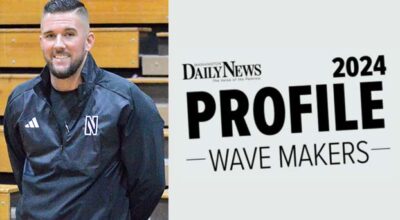Wristband helps when Alzheimer’s patient wants to go home
Published 1:19 am Thursday, September 27, 2012
Alzheimer’s disease is a progressive disorder that starts with a form of forgetfulness that many of us fear when we distractedly misplace our keys. Unfortunately, Alzheimer’s forgetfulness becomes more and more profound as those with the disease lose the ability to recognize the function of the keys or their ability to drive or the ability to know where they are going.
Although stages of decline have been identified clinically, these inabilities are not constant nor are they predictable. Our normal forgetfulness is not the same as Alzheimer’s forgetfulness.
Since last summer, Eleanor has entered a new stage of Alzheimer’s which includes restlessness, wandering, wanting to “go home” and collecting some possessions to “travel” homeward. Her ongoing resistance to self care, to guidance or redirection, plus her willfulness and now her need to leave and find “home” pose real threats to her security and painful challenges to her husband and daughter.
Although the family has put alarms and high locks on the exterior doors, there is no reasoning with someone who wants to “go home.”
Home is not here, even if you have lived here 20 years. It usually means the place where you had small children or where your mama was. Often it is of some comfort for the wandering elder to carry a small stuffed animal or doll to replicate the feeling of caregiving that years before was comforting. But that drive to find what you have lost is persistent.
Eleanor’s family now utilizes a “Never Lost ID” (www.NeverLostWristbands.com). Because the bracelet was a “gift” from her friend (the hired caregiver) Eleanor keeps it on. It is plastic, so it didn’t have to be removed during a recent hospitalization.
While the “Never Lost ID” won’t directly help family locate Eleanor like a transmitter, it can help identify her to those she meets. If not covered up by a sleeve, the information can be seen without actually touching Eleanor, which can add stress.
A second alternative for a wandering elder is CareTrak, a small wristband device which enables family and the police to locate a “wanderer” when he or she leaves home.
The Beaufort County Sheriff’s Office provides this unique safety and protection program using radio technology and specially-trained deputies. It does require battery changes monthly. The Sheriff’s Office is prepared to respond, track and rescue individuals who wander from caregivers 24 hours a day with backup from Project Lifesaver personnel and a specialized K9 search team. Caregivers can obtain additional information on this system from the Sheriff’s Office (252-946-7111).
For a preview, the Sheriff’s Department will demonstrate this helpful option at the Beaufort County/Washington Alzheimer’s Walk and Education Fair from 9 a.m. until noon Oct. 6 at the Redman’s Lodge on East Third Street.
Living with their loved one’s restlessness and apparent anxiety is very painful for this family, but at least they feel they have a backup should Eleanor leave un-noticed.
———
Peggy Cohn, BSN, MPH, Ph.D., is a retired geriatric-care manager with a background in public-health nursing and degrees in family studies and aging. The stories are drawn from local caregivers of folks with Alzheimer’s disease. All caregivers and their families are anonymous to protect their privacy and dignity.





